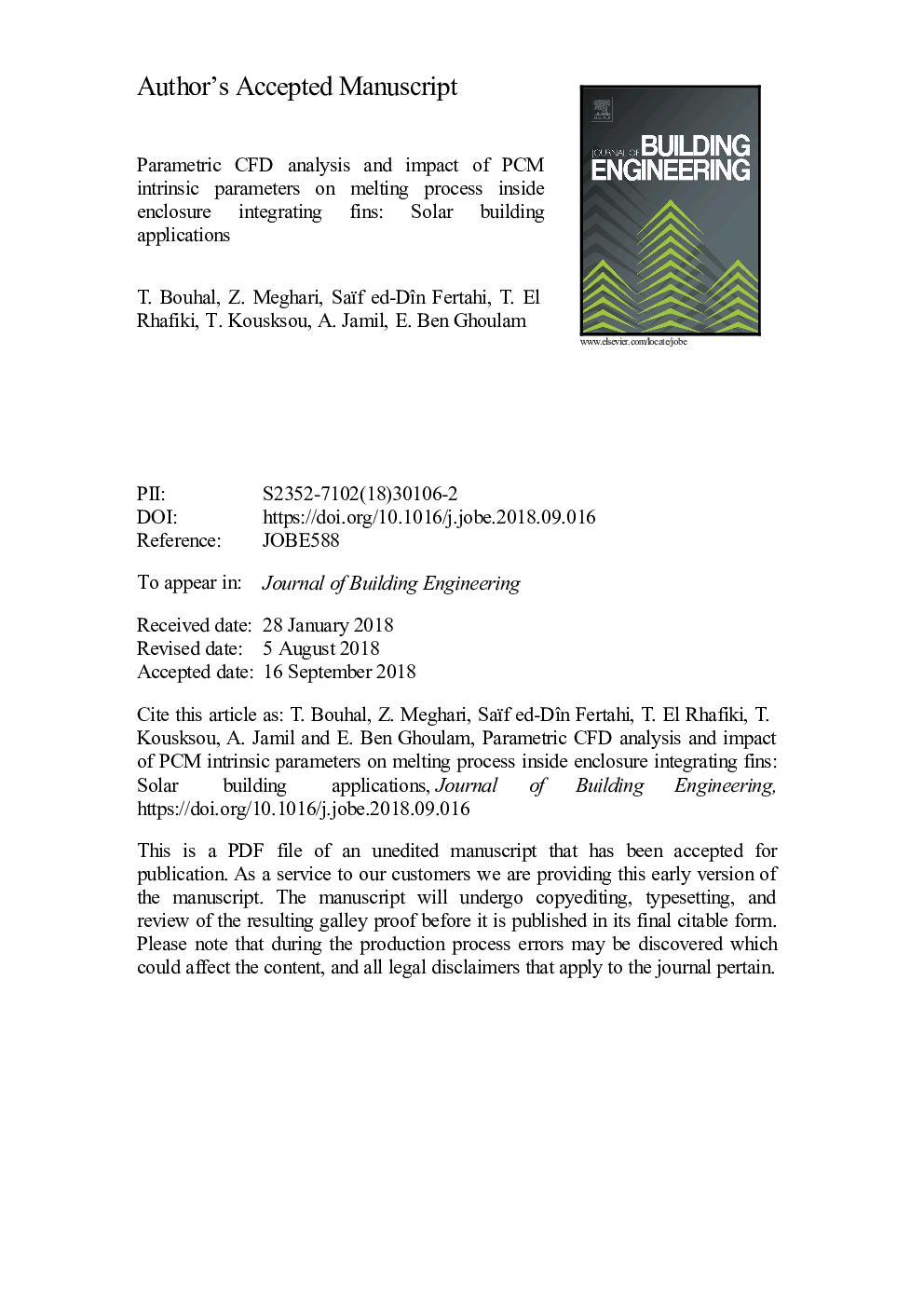| Article ID | Journal | Published Year | Pages | File Type |
|---|---|---|---|---|
| 11001106 | Journal of Building Engineering | 2018 | 24 Pages |
Abstract
The overall aim of this work is to integrate PCM elements into passive solar buildings. To achieve this goal, several numerical studies were carried out to describe the complex behavior of PCM melting filling a rectangular enclosure initially set at a cold temperature Tc. The cavity is vertically heated from the right side wall with a temperature Th=38.3°C while and the left cold wall was maintained at the cold temperature Tc=28.3°C. The horizontal walls were insulated. A transient numerical model based on the enthalpy-porosity formulation is used to study the heat transfer and the melting behaviors through two-dimensional CFD simulations. To enhance the heat transfer and the melting process of the PCM, fins with a rectangular and triangular shape are proposed. Moreover, the effects of both thermophysical properties and fins integration on the flow structure and heat transfer characteristics are investigated in detail. The melt fraction contours with the natural convection driven flow are described and compared, as well as the temperature distributions for a Rayleigh number of around Ra=106. It is found that the rate of the melting increases with the increase in the values of specific heat capacity Cp as well as the thermal conductivity λ of the PCM Gallium. The results showed that the rectangular fin configuration accelerated the PCM melting faster than the triangular fin's shape (the melting time has improved from 35âmin to 32âmin) thanks to the increased exchange area, while the triangular fin uniformized the melting process inside the enclosure.
Related Topics
Physical Sciences and Engineering
Engineering
Civil and Structural Engineering
Authors
T. Bouhal, Z. Meghari, Saïf ed-Dîn Fertahi, T. El Rhafiki, T. Kousksou, A. Jamil, E. Ben Ghoulam,
